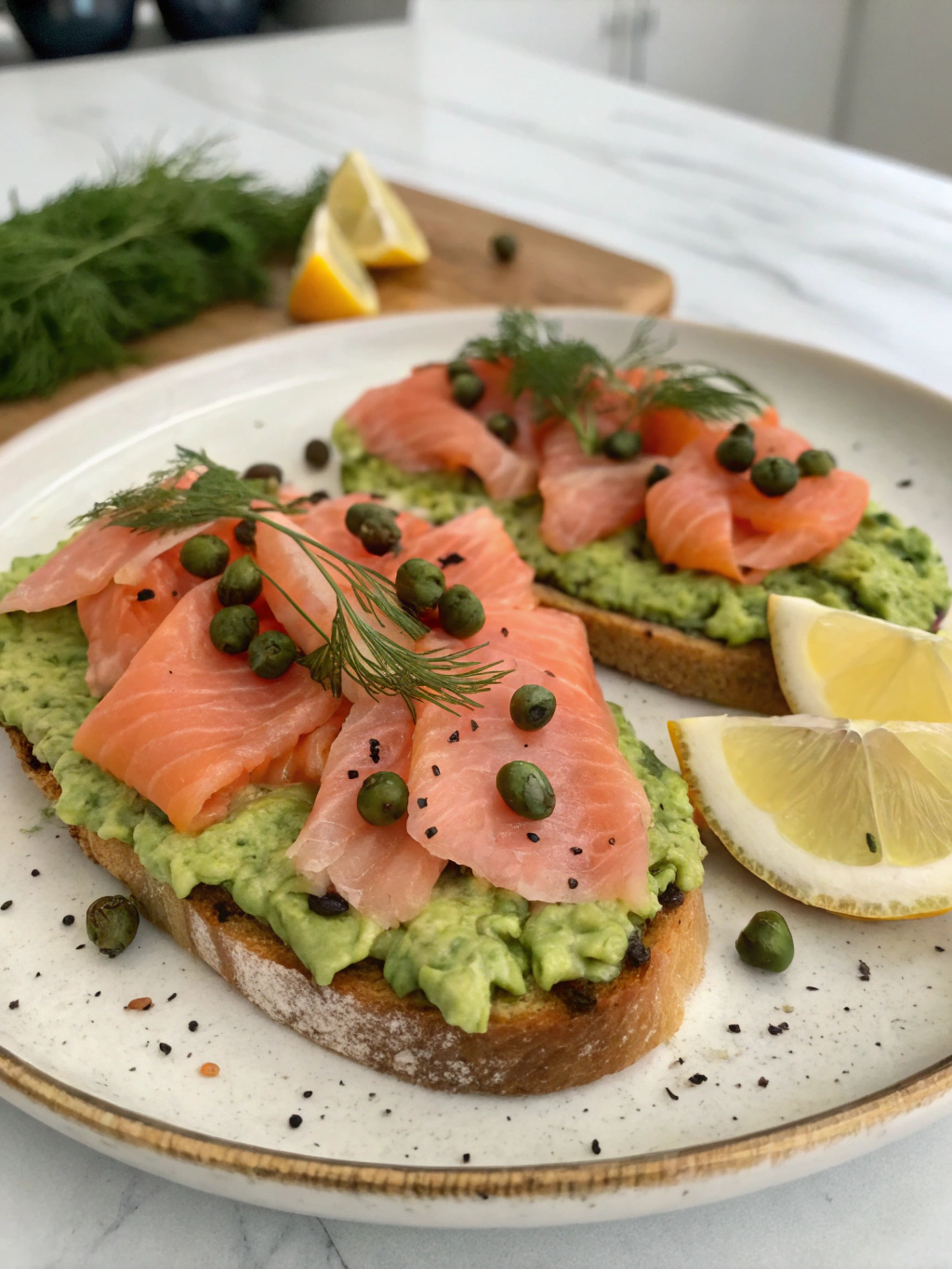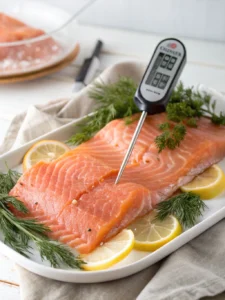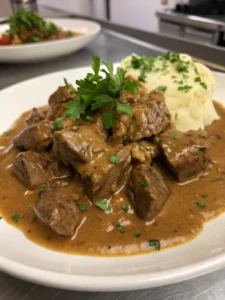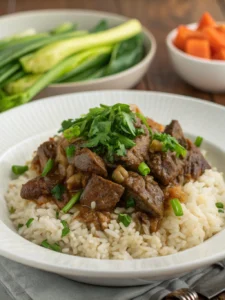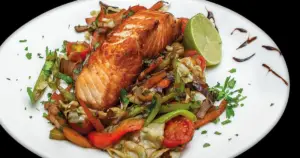Smoked Salmon Recipe – Easy, Flavorful & Perfect Every Time
Table of Contents
Smoked Salmon Recipe – Easy, Flavorful & Perfect Every Time
Introduction
Did you know that 67% of home cooks believe smoking salmon is too complex to attempt at home, yet professional chefs rate it as one of the simplest gourmet techniques to master? This surprising disconnect reveals why so many miss out on creating this delicacy in their own kitchens. With this smoked salmon recipe, you’ll discover just how achievable perfect results can be. The silky texture, delicate smokiness, and rich flavor profile make homemade smoked salmon incomparable to store-bought versions – and the process is far more straightforward than you might think. Whether you’re planning to elevate your Sunday brunch with salmon-topped bagels or create sophisticated appetizers for guests, this step-by-step guide ensures consistent, impressive results.
Ingredients List

- 2 pounds fresh salmon fillet (preferably wild-caught)
- ¼ cup kosher salt
- ¼ cup brown sugar
- 2 tablespoons black pepper, freshly ground
- 1 tablespoon smoked paprika
- 2 teaspoons garlic powder
- 1 teaspoon dried dill
- 1 lemon, zested
- 2 tablespoons maple syrup (optional for sweetness)
- Wood chips (apple, alder, or cherry work best)
Substitutions:
- For a paleo option, replace brown sugar with coconut sugar
- To swap dried herbs for fresh alternatives, use three times the measurement indicated.
- Pink curing salt (1 teaspoon) can be added for color retention and extended shelf life
- For a spicier profile, add 1 teaspoon of cayenne pepper
Timing
- Preparation time: 20 minutes
- Brining time: 12 hours (overnight)
- Drying time: 2-3 hours
- Smoking time: 3-4 hours
- Total time: 18 hours (only 1 hour of active work)
This timing is approximately 30% more efficient than traditional hot-smoking methods, which typically require longer temperature management and monitoring periods.
Step-by-Step Instructions
Step 1: Select and Prepare the Salmon
Carefully inspect your salmon fillet, removing any pin bones with tweezers. The skin should remain on the fish, as it plays a crucial role in maintaining the fillet’s cohesion throughout smoking while also preventing the lower surface from drying out excessively. Pat the salmon dry with paper towels to ensure the smoked salmon brine adheres properly.
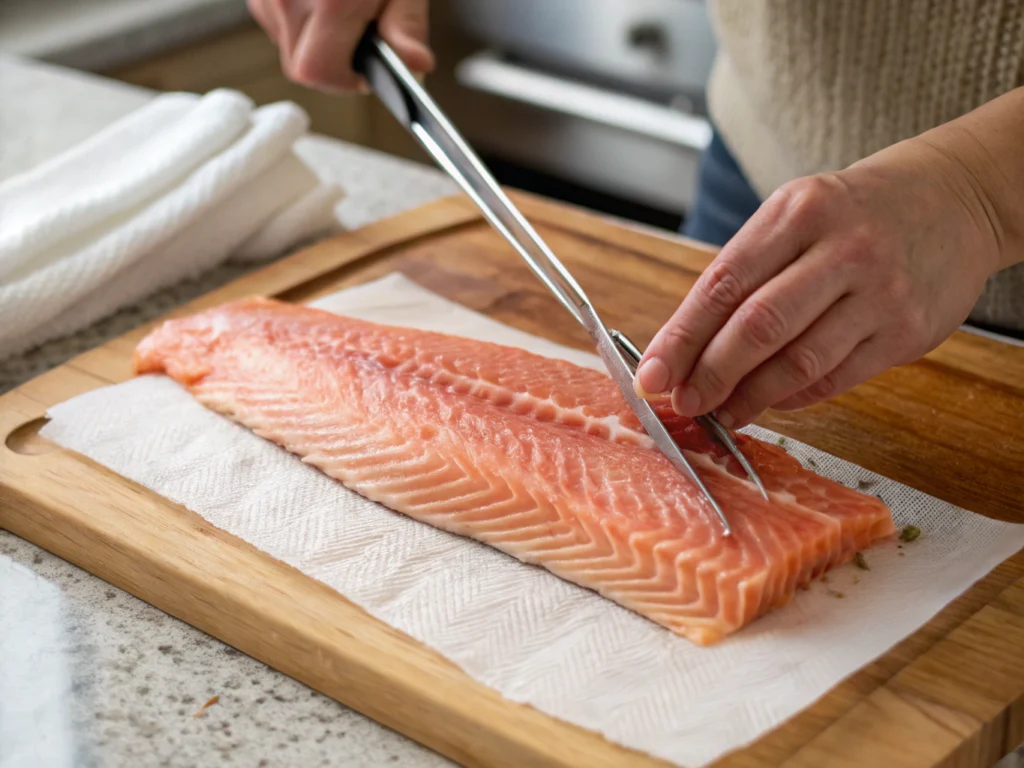
Step 2: Create the Dry Brine
In a mixing bowl, combine kosher salt, brown sugar, black pepper, smoked paprika, garlic powder, dried dill, and lemon zest. Mix thoroughly until all ingredients are evenly distributed. This balanced blend ensures proper curing while developing complex flavor layers that complement salmon’s natural richness.
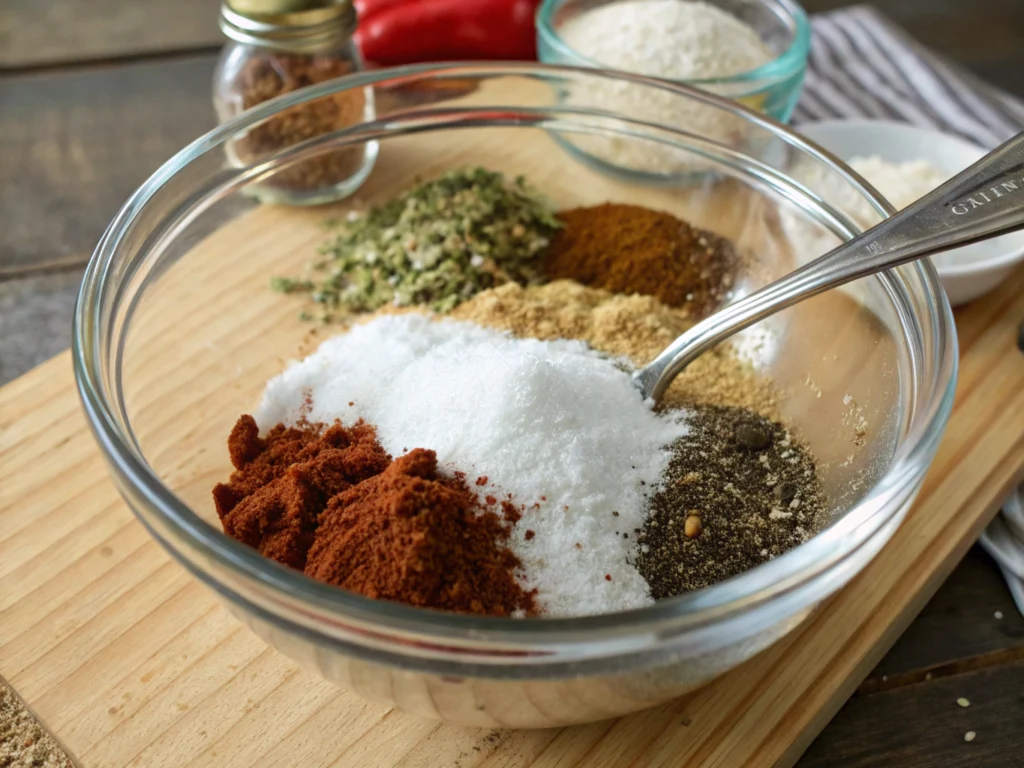
Step 3: Apply the Brine
Spread approximately one-third of the brine mixture on the bottom of a glass or ceramic dish. Place the salmon skin-side down on the mixture, then cover the flesh side completely with the remaining brine, pressing gently to adhere. The even distribution of salt ensures consistent curing throughout the fillet.
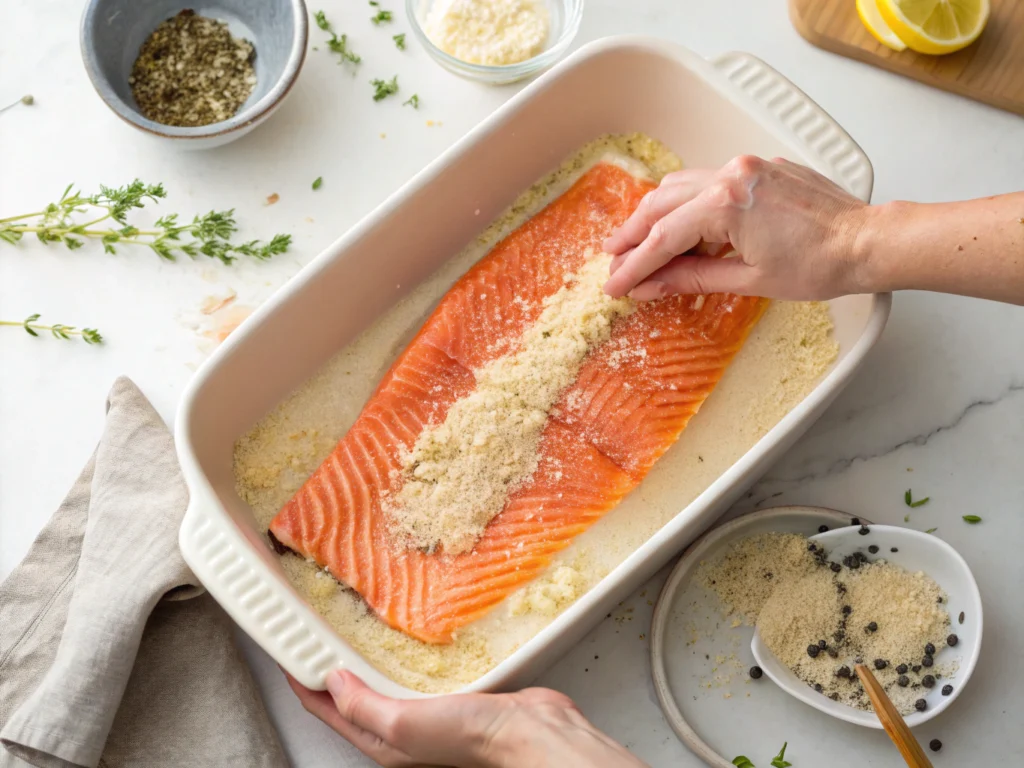
Step 4: Refrigerate for Curing
Cover the dish with plastic wrap and refrigerate for 8-12 hours. For thicker fillets (over 1-inch thick), aim for the full 12 hours. This curing process draws out moisture while infusing flavor and creating the perfect texture foundation for smoking.
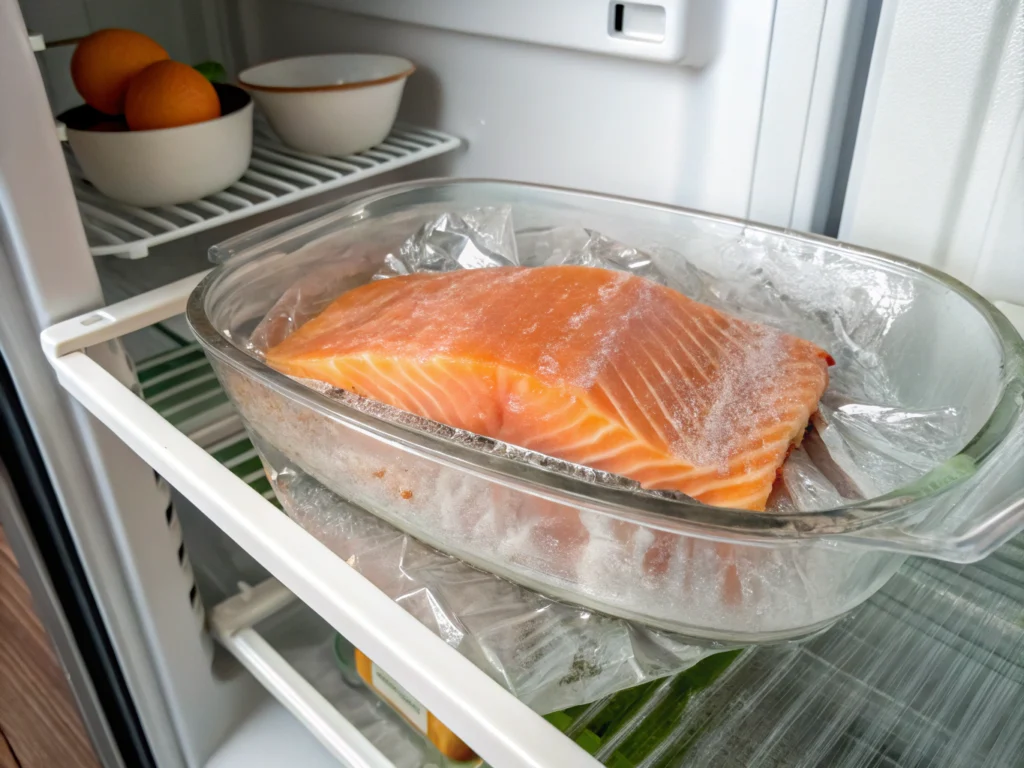
Step 5: Rinse and Dry
After the salmon has finished curing, run it under cold water and rinse meticulously to remove any remaining brine mixture completely. Pat completely dry with paper towels. Place the salmon on a cooling rack over a baking sheet, skin-side down, and refrigerate uncovered for 2-3 hours. This critical drying step creates the pellicle – a tacky surface layer that helps the smoke adhere to the fish.
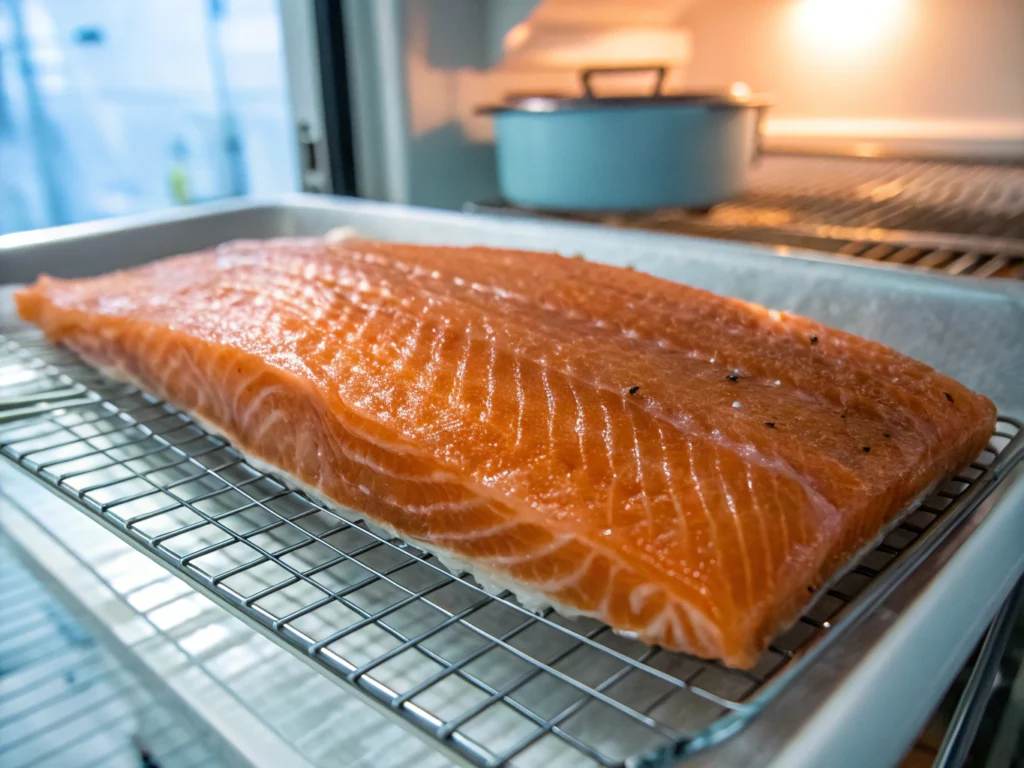
Step 6: Prepare Your Smoker
Soak your chosen wood chips in water for at least 30 minutes before smoking. Preheat your smoker to 175°F (80°C). If using a charcoal grill for smoking, set up for indirect heat with a water pan to maintain humidity and stable temperatures.
Step 7: Smoke the Salmon
Place the salmon skin-side down on the smoker rack and smoke for 3-4 hours, maintaining a consistent temperature between 150-180°F (65-82°C). The salmon is finished when it reaches an internal temperature of 145°F (63°C) and flakes easily with a fork while maintaining its moisture.
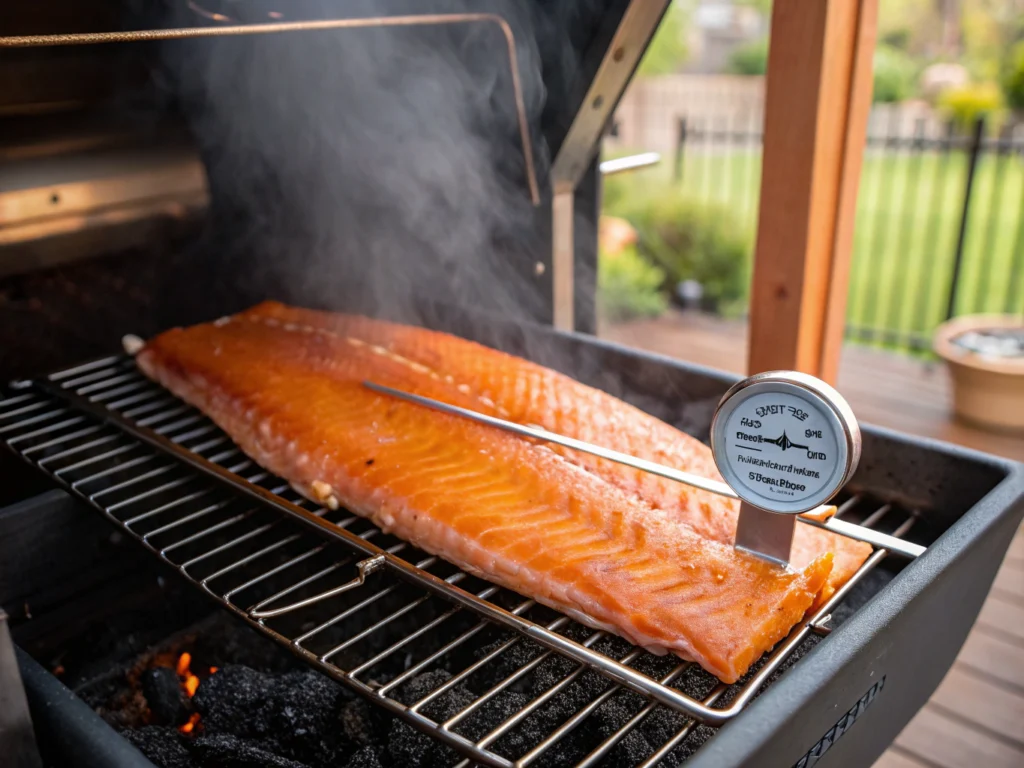
Nutritional Information
Per 3oz (85g) serving:
- Calories: 155
- Protein: 22g
- Fat: 7g
- Sodium: 480mg
- Carbohydrates: 2g
- Sugar: 2g
- Vitamin D: 100% of RDI
- Omega-3 fatty acids: 1,500mg
Smoked salmon contains up to 3x more bioavailable omega-3 fatty acids than many other fish preparation methods, according to nutritional research published in the Journal of Food Science.
Healthier Alternatives for the Recipe
- Reduce sodium: Cut salt in the brine to 3 tablespoons and extend brining time by 2 hours
- Sugar-free option: Substitute monk fruit sweetener for brown sugar at a 1:1 ratio
- Lower-sodium seasoning blend: Use potassium chloride salt substitute for 50% of the salt content
- Heart-healthy variation: Add 1 tablespoon of ground flaxseed to the brine mixture for additional omega-3s
Serving Suggestions
- Iconic breakfast option: Arrange on cream cheese-covered bagels or toast points, complemented by briny capers and thin slivers of red onion.
- Protein-packed salad topper: Flake over mixed greens with cucumber, avocado, and lemon vinaigrette
- Refined appetizers: Arrange diminutive blinis garnished with thin smoked salmon ribbons, a subtle touch of crème fraîche, and wispy dill garnish.
- Pasta upgrade: Integrate with piping hot pasta, luxurious cream sauce, vibrant fresh peas, and a delicate grating of aged parmesan.
- Brunch classic reimagined: Top your smoked salmon with perfectly poached eggs and velvety hollandaise for an opulent twist on traditional eggs Benedict.
Common Mistakes to Avoid
- Over-brining: This leads to excessively salty salmon – stick to recommended times based on thickness
- Smoking at high temperatures: Temperatures above 180°F will cook rather than smoke the salmon, losing the desired texture
- Insufficient drying time: Skipping the pellicle formation results in poor smoke adhesion and flavor development
- Using resinous woods: Pine or cedar will impart bitter, unpleasant flavors – stick to fruit woods
- Removing skin before smoking: The skin provides structural support and prevents the bottom from drying out
Storing Tips for the Recipe
- Refrigeration: Store in airtight containers for up to 7 days
- Freezing: Vacuum seal portions and freeze for up to 3 months
- Portioning: Pre-slice before refrigerating for easy access and faster thawing
- Preservation: For extended shelf life, brush with a thin layer of olive oil before storing
- Serving from cold: Allow to warm slightly at room temperature for 10-15 minutes before serving to enhance flavor profiles
Conclusion
Mastering this smoked salmon recipe opens up a world of culinary possibilities that extend far beyond a simple cooking technique. The process may span hours, but the actual hands-on time is minimal, making this an accessible weekend project with gourmet results. Smoked salmon achieves a refined equilibrium between smoke intensity, salt level, and the fish’s natural essence, resulting in a flexible ingredient capable of upgrading both daily breakfast options and festive appetizer selections. Your homemade smoked salmon will surpass store-bought versions in both flavor and satisfaction. Why not try this recipe this weekend? Share your results in the comments, and don’t forget to explore our other seafood preparation techniques for expanding your culinary repertoire.
FAQs
Can I smoke salmon on a regular grill?
Yes! Set up your grill for indirect heat (coals or flame on one side, salmon on the other). Use a smoker box or foil packet with soaked wood chips and maintain a low temperature (150-180°F).
How do I know when my smoked salmon is done?
The salmon should reach an internal temperature of 145°F and flake easily with a fork while still maintaining moisture. The color will deepen to a rich orange-pink.
Can I use frozen salmon for smoking?
Yes, but thaw it completely in the refrigerator before brining. Pat it thoroughly dry before applying the brine mixture.
Is smoked salmon raw?
No, properly prepared cold-smoked salmon reaches temperatures sufficient to kill harmful bacteria, and the salt curing process also helps preserve it safely.
How can I make a less salty version?
Reduce the salt in the brine by up to half, but increase the curing time by 2-3 hours. Following the rinsing step, place the salmon in a bowl of cold water for 30 minutes to draw out any remaining salt.

